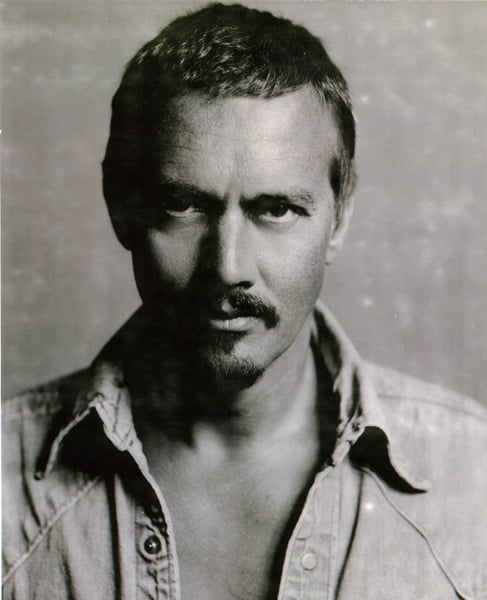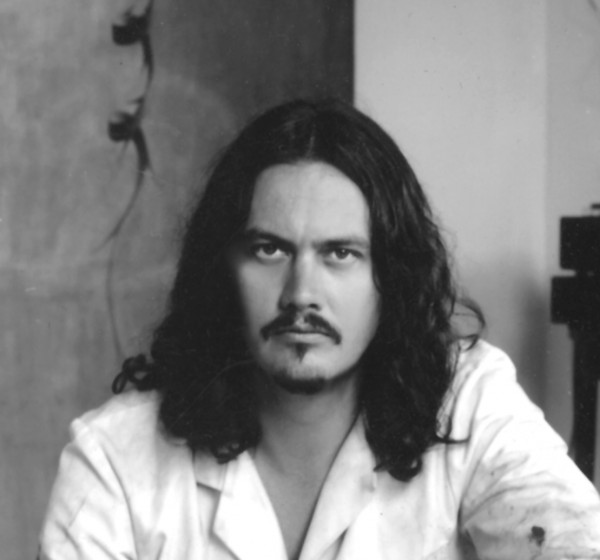People
Anthony Haden-Guest On the Late New York Artist Ed Albers
Albers was an early responder during 9/11 and that day forever changed his art.

Albers was an early responder during 9/11 and that day forever changed his art.

Anthony Haden-Guest

In February, we reported on the death of Ed Albers. The remembrance here is by artnet News contributor Anthony Haden-Guest.

Ed Albers
Ed Albers almost certainly died of smoke inhalation when a fire roared through his apartment at 132 East 16th Street on the morning of February 23.
Albers, who died at 59, had been a painter of remarkable talent, but he had firmly closed the door on his career many years before, and this for reasons that embed him more deeply in the dark history of our time than other more productive artists. His was a life of our times.
I don’t remember precisely how we met, but it was in the decade before the Millennium. We would connect at openings and he invited me to dinners in his ample studio on Bond Street from tine to time. It had a ruinous palazzo aesthetic with a huge fireplace and an unManhattanish height to the ceilings, and lots of windows.
I greatly admired—make that admire—the paintings that had made his reputation, organic forms that looked at once eccentric and reasonable, like sci-fi delivered with the scrupulous eye of a natural scientist.
A hefty fellow, 6-foot-3, long-haired, and given to zooming around on a Harley, Ed Albers was somebody you would want on your side if a delicate situation arose; but he could also be unpredictable. Indeed, he practically chucked me into the boxing ring that was part of the entertainment at We Live In Public, the non-stop party on Lower Broadway hosted by the maverick dot com/dot gone entrepreneur and Warhol-in-embryo Josh Harris.
Ed Albers was Dutch-born and took pride in the fact that his father had fought with the Dutch resistance, yet although he was already in his teens when he moved to Manhattan in 1975, he had no trace of an accent and had evolved into a hyper-American.
Married three times, his daughter by his second wife was named Una Simone. Una Simone Albers. USA, get it? Albers was torn up by the loss of twins before her birth and another baby.
Una and Albers’s huge, temperamental German shepherd, Captain, were the living creatures upon whom Ed Albers most passionately doted.
So. 9/11.
On that morning, what Ed heard downstairs took him up to his roof. TriBeCa not yet having headed skywards, he had a clear view of the immediate aftermath. A human tsunami was surging uptown, so Albers mounted his Harley and headed down towards what was not yet called Ground Zero. One of the earlier responders to arrive, he was allowed on-site by firemen, shot some photographs, and scrambled around, looking for survivors.
“They were first in the North Tower, then in the South Tower,” said his third wife, Karena, from whom he had separated. And it seems that he did find a survivor. “He came across a mass that turned out to be a body. And it was still alive,”Karena said. “Having his father part of the Dutch resistance colored Edward’s life always. He always wanted to be the rescuer. The fire department showed up. But they couldn’t do anything because the body was massive and the building was coming down and everyone was leaving.”
She continued: “So the firemen and everyone was running. The firemen had the flashlights behind them. Ed said they made these sounds like crickets. So he could follow the lights. And then he ran into a wire that had fallen. And it knocked him sideways. He thinks he was probably only out for about five seconds And that was why he got horrible damage to his lower back. He never recovered. He was never the same after 9/11. Never.”
Albers assembled his photographs and they were put on show in the firehouse on Spring Street that was the predecessor of the official memorial. “And he donated that piece,” Karena said, speaking of the photos.

Ed Albers.
Albers had stopped painting after the death of his baby twins, but he would sometimes discuss getting back into it. He took a natural interest in the secondary market in his work, and several of his canvases were stacked against the wall on East 16th.
But after after 9/11 he hardly ever talked of getting back into art-making.
The principal interests of Ed Albers after 9/11 were his daughter and conspiracies directed against the democracies, most particularly against the United States.
I am inclined to disregard coincidences, by the way, seeing them as pieces of jigsaw puzzle pictures that usually don’t exist. But, God, it is eerie that Albers died collapsed against a door which the firemen couldn’t open because he was just too massive.
Ed Albers’s wake was at Il Buco, almost opposite his former studio on Bond Street. It was attended by his mother Margarita, his sister Yvonne, and his brother, Jos, a forensics detective in the Netherlands’ National Crime Squad, based at Eindhoven. Also there was Una’s mother Maura, Albers’s second wife, and Karena.
Others present included a close friend of Ed’s, a former government man, who spoke of getting urgent telephone calls from him, describing darkly suspicious goings on here and there. “I would tell him, ‘Ed, they’re probably just drug dealers,’” he said, and he might add, “Careful, or you’ll end up in the East River.”
Oddly, in a conversation Ed Albers and I had shortly before his death, he did indicate that he was thinking of getting back into making pictures; but this was certainly because I was bugging him to do so.I saw no signs of it, and the fire, which was started by a malfunctioning extension cord, and in which Captain died beside him, blackened the canvases in the the room anyway.
I used to think I hadn’t lost a good friend in 9/11. I was wrong.